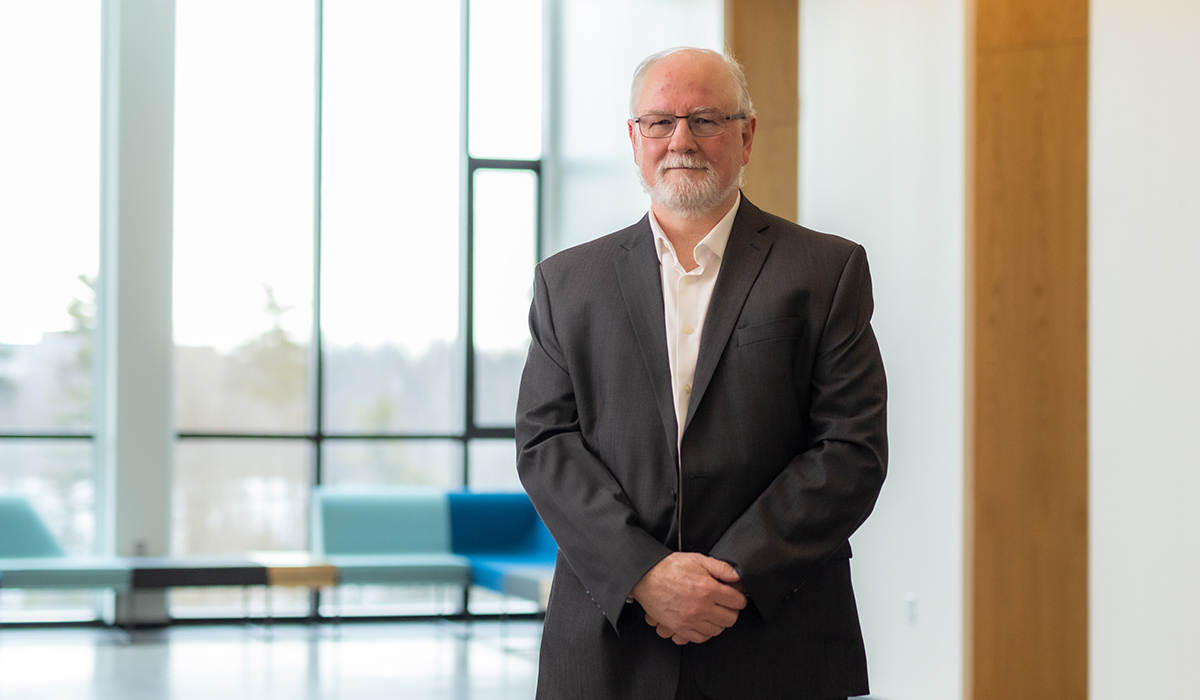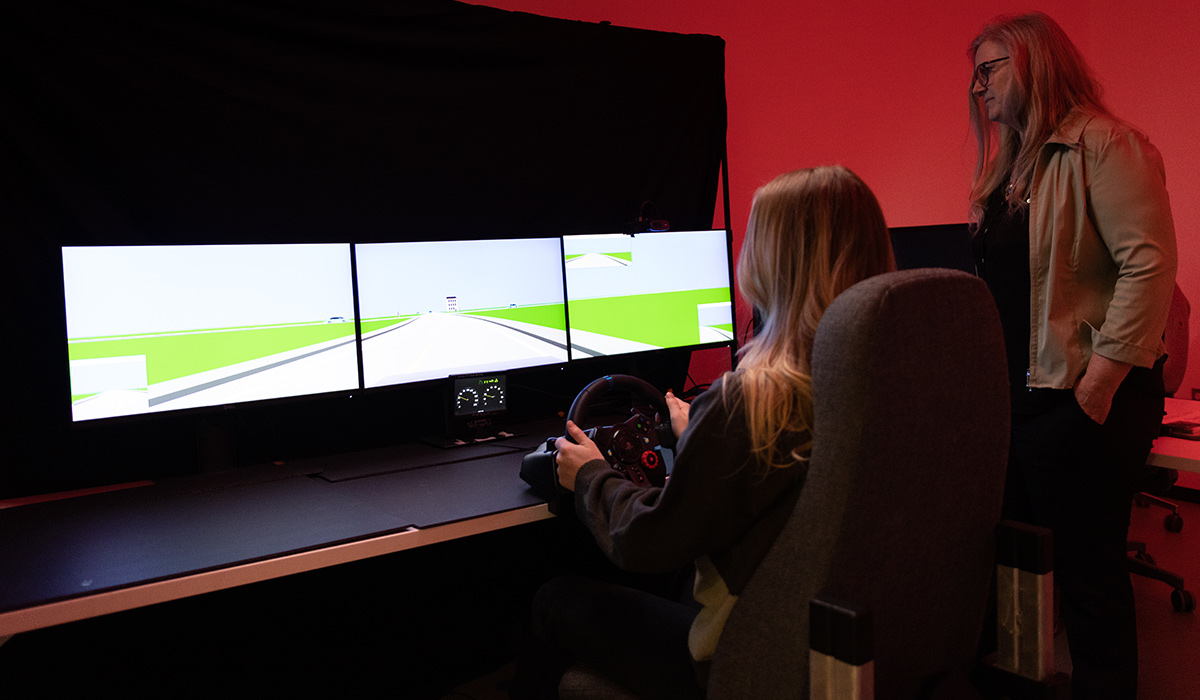As people age, natural declines in physical and cognitive function affect our ability to process information and make decisions.This has an impact on everyday activities such as driving. For many mature adults, driving is important because it allows them to run errands, attend events and visit with family or friends. It’s a way to engage with the world and buoy one’s mental health, especially for residents of rural or remote areas where public transit is not available.
Moreover, while modern vehicles increasingly contain autonomous or semi-autonomous driving features that are designed to prevent accidents, this technology can be challenging for older people to adopt.
Carleton cognitive science and psychology professor Chris Herdman, director of the Advanced Cognitive Engineering (ACE) Laboratory on the ground floor of the university’s Visualization and Simulation Building, is developing a unique approach to assess the abilities of older drivers.
Using driving simulators and on-road studies at Ottawa’s Area X.O test track, as well as terabytes of data that today’s cars record, Herdman and his team are gaining a better understanding of how cognitive changes affect driver performance as people age.

These findings will ultimately inform the development of fair and accurate measures that older adults, their families and health practitioners can use to determine when a driver should be reassessed and how technology can help keep them safe on the road, supporting their continued independence.
“We all know how hard it is for an elderly driver to have their licence taken away,” says Herdman, who has received funding from the National Research Council Canada’s Aging In Place Challenge program and Canadian Institutes of Health Research for this project after completing related studies in collaboration with Transport Canada.
“It is often very difficult for a person to self-reflect on their own driving abilities. It is equally challenging for a family member to judge whether an elderly relative is having difficulty driving. However, there are new ways to gather information about drivers that can tell us when they’re experiencing difficulties and how their abilities are changing. We want to make sure we can provide relevant and timely feedback to elderly drivers and to their families.”
Reacting to Surprises on the Road
Herdman’s team uses driving simulators to study driving performance, including how people react to challenging or surprising conditions, like a ball rolling across a road or a railway crossing signal suddenly starting to flash.
Test participants have their hands on a steering wheel and look at a simulated streetscape either on wraparound monitors or through a virtual reality headset. The simulator can determine when the driver notices an event and how quickly they take action, while also monitoring their heartrate and tracking eye movements.
Similar experiments are conducted in an instrumented car on the 16-km roadway network at Area X.O.

Meanwhile, many modern cars also have sensors that collect data when they’re on the move, such as how frequently the lane departure warning mechanism is engaged or how rapidly people accelerate. Shared in accordance with strict ethical standards — and aggregated to protect the privacy of drivers — this information can also be used to help assess and understand behaviour change.
“We can gather this vast array of data from a vehicle and use machine learning to classify drivers into different levels of performance,” explains Herdman.
“This can be shared with an individual’s driver safety team, and if there’s a decline in somebody’s abilities, it could be time for an assessment.”
The Role of Driver Safety Teams
Driver safety teams are a key part of Herdman’s three-year SENSE-MD project. Comprised of the elderly driver, their family and a health practitioner, the team will receive timely and relevant information to help decide whether they are still able to drive safely.
Understanding how seniors engage with autonomous or semi-autonomous driving technologies is another prong of this project. These features could help drivers, but also could confuse them, and people need to be ready to instantly take full control of a vehicle when required.
“As cars are built with more and more of these technologies,” Herdman says, “they need to be designed in a way that ensures all drivers use them safely.”
Herdman’s research group is truly interdisciplinary. It includes faculty and students who are focused on human factors along with others from engineering. They collaborate with aging-in-place advocacy organizations as well as government and industry associations to ensure that their findings enhance community health.

After all, we know that people’s cognitive abilities decline as they age, but these changes are not uniform. A 90-year-old can be just as sharp as a 30-year-old, so gaining an in-depth understanding of individual behavioural change is the key to improved safety and informed policy decisions.